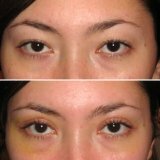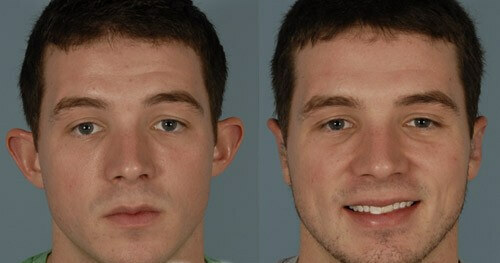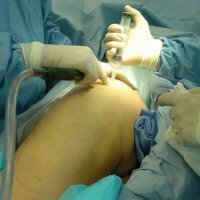Eyelid Plastic Surgery

"Singapore" - the so-called plastic of the eastern age. Conduct it with a weak or absent double fold of the upper eyelid. In addition, it is done to eliminate the overhanging skin of the eyelids( including epicanthus).
The technique of such plastics is not complicated. In order to make the Asian eyelid European, the surgeon performing the plastic surgery corrects the incision of the eyes, forming a supraorbital fold. Initially, this fold may not be or it can be very small, and therefore the upper eyelids are almost invisible to Asians, eyes look flat, lacking volume, which is unusual for Europeans. It is for giving European expressiveness and liveliness that they perform bluffarpaplasty of Singapuri.
The essence of the operation
Although the name of the operation is slightly flippant, the plastic itself is quite complicated and the doctor should have considerable experience with the Asian type of eyes. Before the plastic surgery, the surgeon should clearly and clearly explain to the patient what the appearance of not only the eyes, but also the entire face, will be. The best way to do this is through computer modeling. Doctors and the patient should have one opinion as to what the result should be as a result of the operation.
This operation involves the formation of a scar between the skin and aponeurosis of the muscle or the formation of an insert between the skin and the muscle. During the operation, a cut is made in the place where the fold of the upper eyelid is usually located. The surgeon then removes excess muscle tissue, skin and sutures the incision. Stitches from the operation are located in the fold of the eyelid, and therefore are not visible to others. This operation allows you to form a section of the eyes of the European type, making it more open.
Very often the plastic of the eastern age is combined with other operations. Sometimes for such an operation it is necessary to raise the back of the nose.
This operation lasts in different ways: from half an hour to an hour and a half - the time depends on the technique and scope of the surgery. An operation is usually performed under local anesthesia. After the operation, the patient can go home the same day.
Rehabilitation
In the first hours, the patient experiences mild pain. Within seven days after the operation, it is necessary to wear special labels fixed on the skin incision lines. Swelling and bruising can be within two weeks after plasty. Also, the doctor prescribes to the patient an antibacterial eye ointment and antibacterial eye drops, they protect the eye conjunctiva and the cornea of the eye. To wear contact lenses in the first two weeks is undesirable, also it is not necessary to apply the first 7-14 days and make-up. Most patients return to work as early as the seventh day after surgery.
If desired, after plastic surgery, you can go to the beauty salon and make several procedures that will facilitate a faster removal of swelling and bruising. For example, you can enroll in a special massage that helps reduce edema or physiotherapy.
The effect of
The final result of plastics can be observed in six to eight weeks. If the operation is carried out correctly, the eyes will "open up" more widely, free from the overhanging eyelids, the epicanthus will disappear, and the eyelashes will be directed upwards, thus the eyes will have a European incision. Over time, the scars will become pale and become invisible even with eyes closed. It happens that the scars are noticeable and a bit rude even after eight weeks. This situation is considered a complication after the operation, which does not always depend on the doctor, because the specific features of each individual are of no small importance in the formation of scars.
Complications of this operation include: gross hypertrophic scars, if there is a tendency to their formation. Various inflammatory processes and infections after surgery do not practically occur.
Contraindications
There are contraindications for this operation:
- diabetes mellitus;
- infectious diseases;
- of any kind of somatic diseases in severe form( diseases of internal organs);
- chronic diseases of the eyelids and conjunctiva;
- bleeding disorders.



